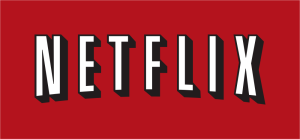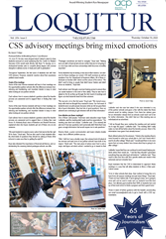When I was “officially” diagnosed with anxiety disorder during my senior year of high school, I was not really sure as to what a mental illness really was… Now that I have been living with my own mental illness for what is going on to be three years, I would say that I have become quite the advocate for all different types of mental illnesses.
Because of this, I was super excited to check out two of Netflix’s originals that were coming out in 2017 because they were both revolving around mental illnesses. These two originals were “13 Reasons Why” and “To The Bone.” “13 Reasons Why” focuses primarily on depression and suicide, whereas “To The Bone” focuses on different eating disorders but specifically anorexia nervosa.

On March 31 of this past year, “13 Reasons Why,” starting streaming on Netflix. The series is based off of Jay Asher’s novel, which was published on October 7 of 2007. The show follows a teenaged boy named Clay Jensen, who anonymously received a set of tapes recorded by his classmate, Hannah Baker, explaining why she chose to commit suicide.
I watched the show within a weekend, a weekend that ended up being a rollercoaster of emotions for me. I found myself feeling happy at some points, sad at others, angry during a few moments and let down at the end.
By the end, I was extremely disappointed because when I finally took the time to analyze the show, I realized that it glamorized different issues in regards to adolescence, mental illnesses and, especially, suicide.
For instance, one of the smaller issues in the show is that none of the teens talked to any adults about the problems that they were having. In my opinion, this is a huge issue. Communication is key, especially in situations like these.
Another thing that “13 Reasons Why” inaccurately depicts is relationships. Every relationship in the show is unhealthy, whether it is between parents and children, partners or friends. It teaches viewers that it is normal to not communicate with your parents, to cheat on your partner or to hurt your friends.
Aside from that, the writers and producers make it seem like suicide is simple and that it is the only way out. Yes, Hannah Baker did try and talk to her guidance counselor and he was no help, but there were so many more options for her. She could have tried talking to her parents, going to therapy or seeking medical attention.
By the last episode of the show, I was angry at Baker. I knew that she had been through a lot, but she had so much going for her. There were so many things in life that Baker had to look forward to. At the time she committed suicide, she was still in high school. There was so much potential and she was not even aware of it.
The show was fictional, so I could not stay mad at Baker forever. But in reality, I was mad because it has the power to influence people who are struggling with depression and are facing suicidal thoughts that suicide is their only option when it is most certainly not.
Once we thought all of the controversy had died down, in July, Netflix started streaming its original film “To the Bone.”
“To the Bone” follows a young woman named Ellen. Ellen is struggling with anorexia nervosa and was just kicked out of yet another rehabilitation center for refusing treatment. Throughout the duration of the movie, the viewers follow Ellen on her road to recovery.

I was not as disappointed with “To the Bone” because I thought that it was an incredible film that sheds a light on eating disorders and it gives people who may be struggling with them the opportunity to talk about them.
“To the Bone” is known to be a trigger for people who are in recovery from an eating disorder. There is a scene in the movie where Ellen is counting her calories that has since turned into a popular gif on pro-anorexia blogs, as well as a scene where you can see Ellen’s spine and she almost looks emaciated. The scenes are circulating on the blogs as thinspiration.
I know that the writers and producers of both “13 Reasons Why” and “To the Bone” had good intentions while creating these productions, but in all honesty, they ended up glamorizing mental illnesses and making it seem as if starving yourself is the best way to lose weight and to be healthy and that ending your life is the best way to finally be at peace.
If Netflix is going to inaccurately depict mental illnesses and if their shows and films are going to be a trigger to those who are either struggling with a mental illness or are in the process of recovering from a mental illness, then should these productions be released?
If you or anyone you know is struggling with a mental illness here at Cabrini, you can visit the Counseling and Psychological Services in Grace Hall. They’re open Monday through Friday 9 a.m. to 4 p.m. by appointment and noon to 1 p.m. for emergency walk-ins.


